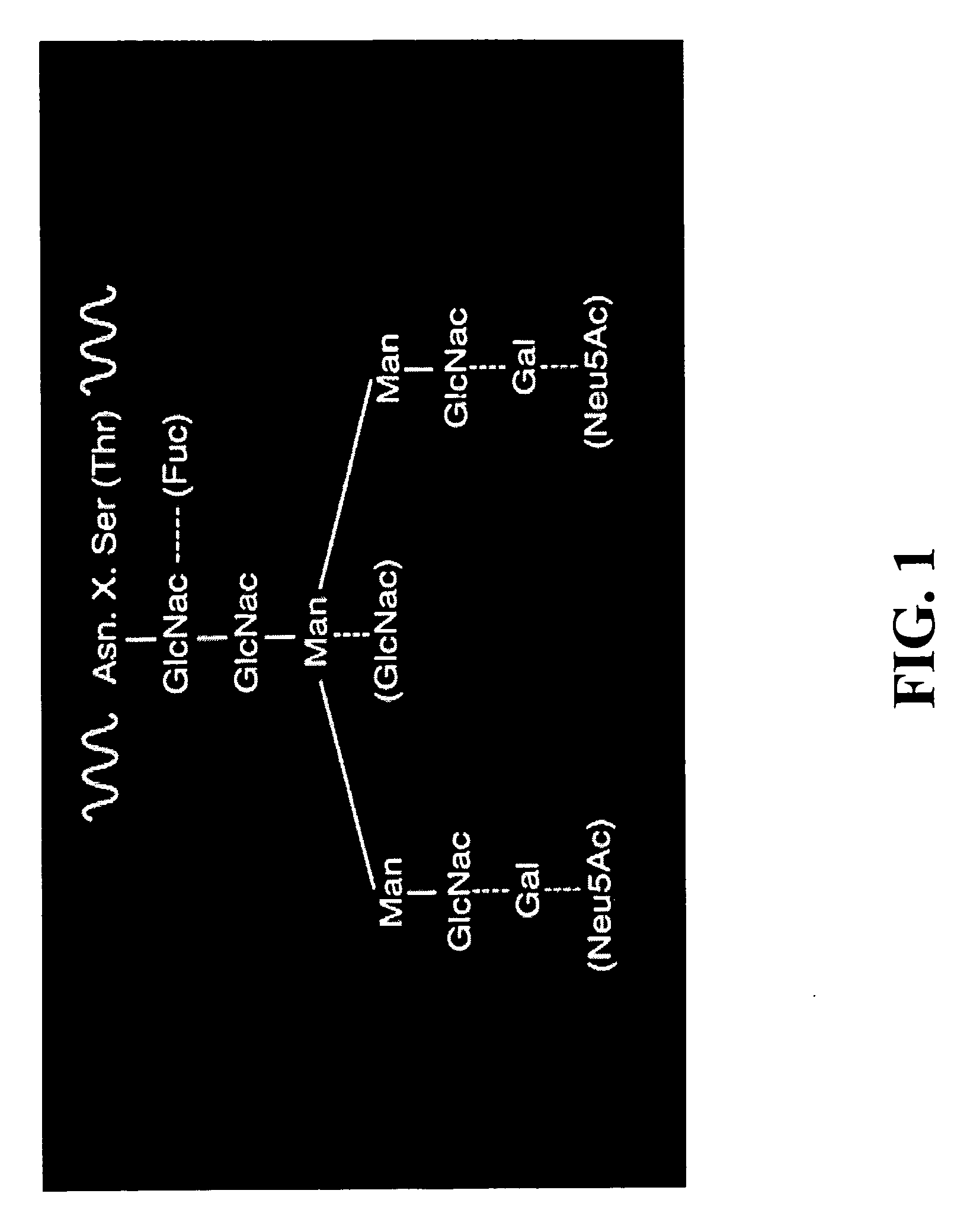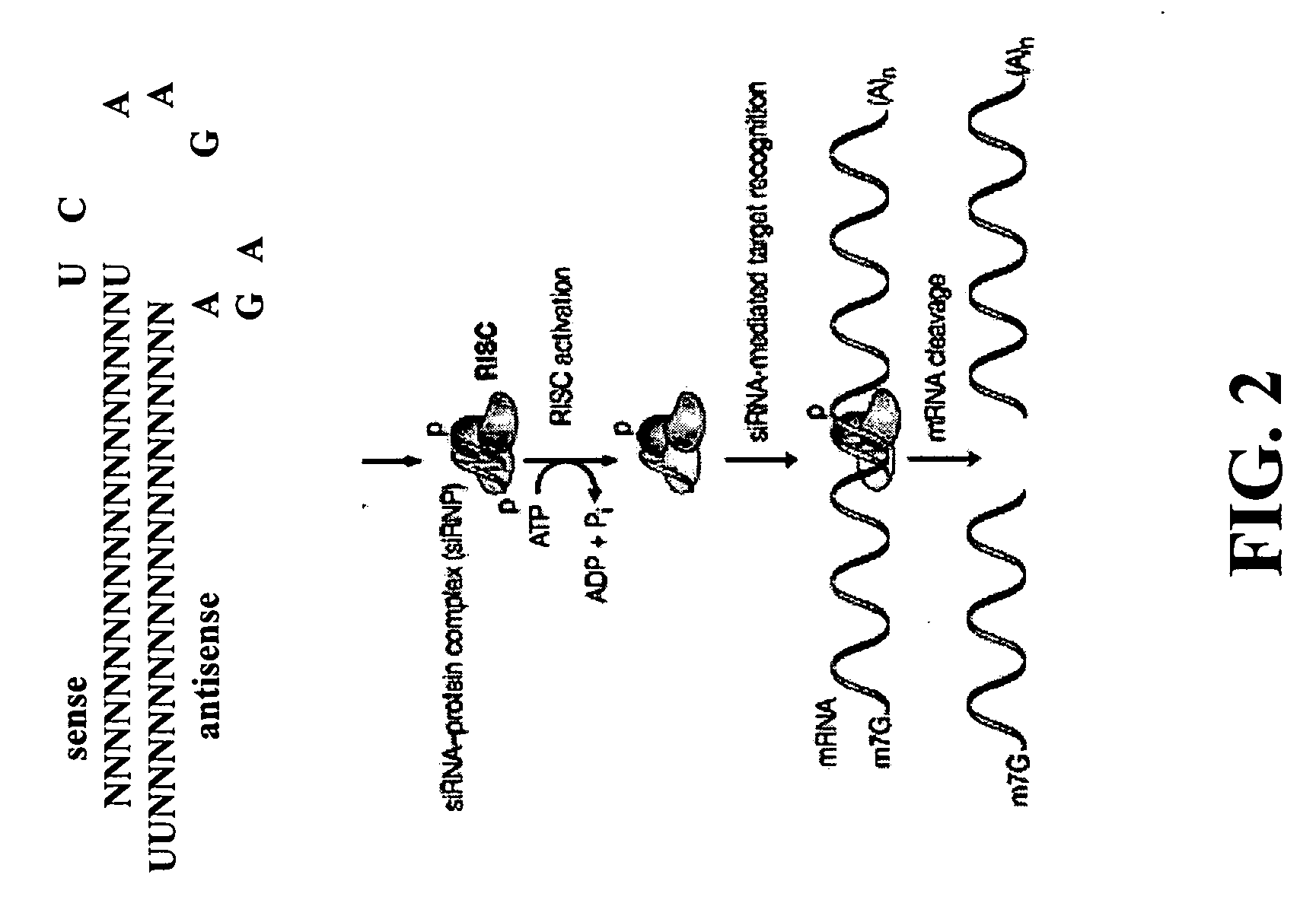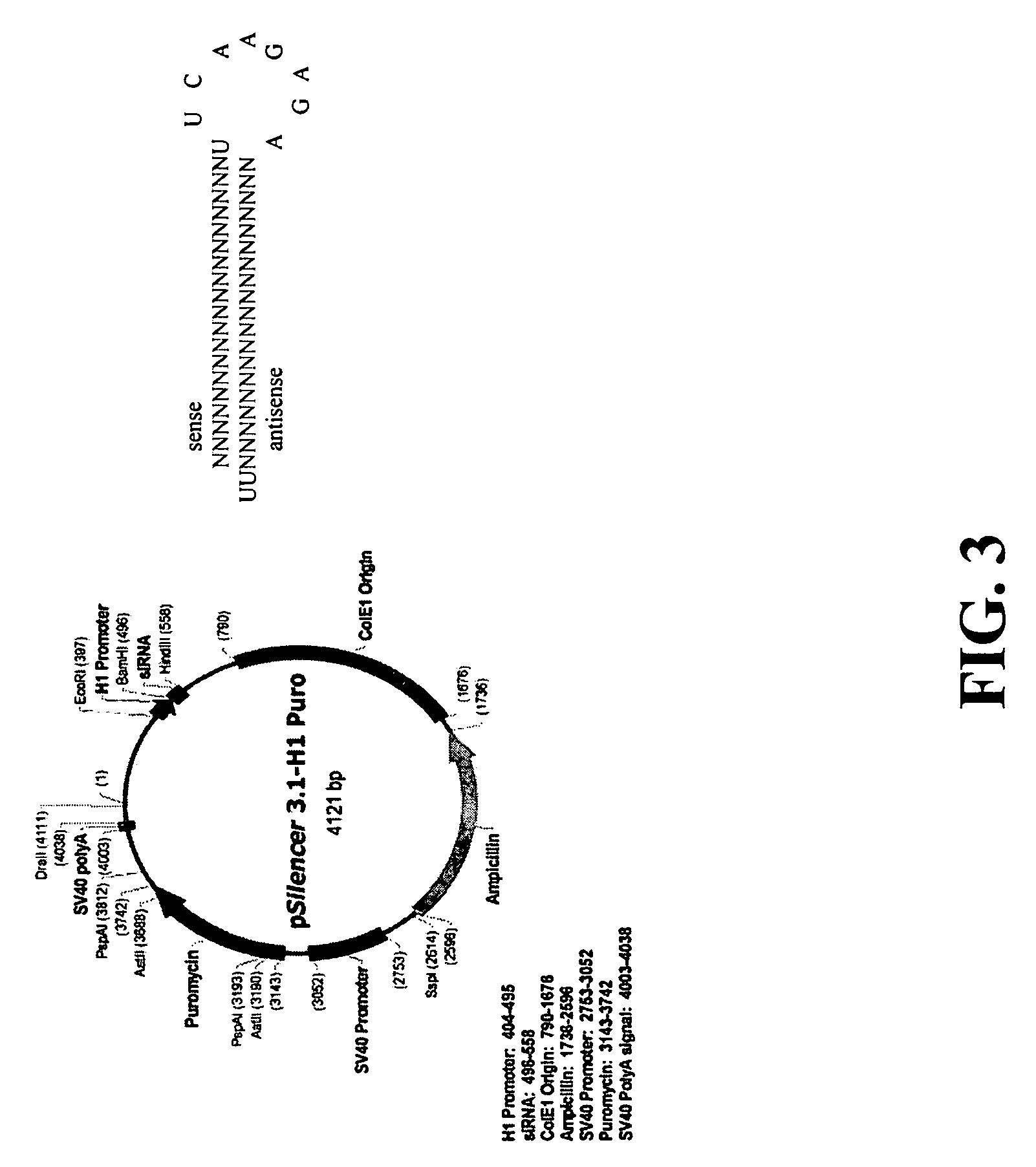Method of producing antibodies with improved function
a technology of antibody and function, applied in the direction of antibody medical ingredients, immunological disorders, drug compositions, etc., can solve the problems of poor antibody yield of these cells, cell lines are not useful to make therapeutic antibody products commercially, etc., to improve the binding affinity of antibodies, enhance fcriii binding, and improve the effect of antibody binding affinity
- Summary
- Abstract
- Description
- Claims
- Application Information
AI Technical Summary
Benefits of technology
Problems solved by technology
Method used
Image
Examples
experimental examples
Example 1
Conversion of an Existing Cell Line to a Less-Fucosylated Cell Line
[0282]In order to achieve high yields of non-fucosylated antibodies in CHO cells, RNAi approach was employed to knockdown the expression of FUT8 gene. pSilencer 3.1-H1-Puro plasmid from Ambion, Inc. (Austin, Tex.) was used to produce short hairpin siRNA consisting of 19 nt (nucleotide) sense siRNA sequence specific to the gene of FUT8, linked to its reverse complementary antisense siRNA sequence by a short spacer (9 nt hairpin loop), followed by 5-6 U's at 3′ end (FIG. 3). The method used to design siRNA probes to target the CHO FUT8 gene was described by Elbashir et al (2002). Five different siRNA probes were designed (probe #1-5) to target the different regions based on the available CHO FUT8 DNA sequence (FIG. 4). Probe 1 (SEQ ID NO.3 and NO.4); Probe 2 (SEQ ID NO.5 and NO.6); Probe 3 (SEQ ID NO.7 and NO.37); Probe 4 (SEQ ID NO.38 and NO.39); Probe 5 (SEQ ID NO.40 and NO.41). The siRNA encoding sequence c...
example 2
Fucose Content of Stably Expressed Antibodies Manipulated by Transient siRNA Expression
[0286]RNAi2 and RNAi4 plasmids were transiently transfected into a previously established stable CHO cell line expressing a humanized anti-CD20 antibody, 2H7.v16 (clone #60). The transfected cells were then separately seeded into 250 ml spinner vessels in serum free medium for antibody production.
[0287]The expressed and secreted 2H7.v16 antibody in the harvested cell culture fluid was purified by a protein A column and N-linked oligosaccharides were analyzed for fucose content by matrix-assisted laser desorption / ionization time-of-flight mass spectral analysis (MALDI-TOF) as described in Papac et al., 1998. The antibody was also assayed in a FcγR binding assay (described below). There are 3 groups of human Fcγ receptors: FcγRI, FcγRII, and FcγRIII. Some of these have a functional allelic polymorphism generating allotypes with different receptor properties (Dijstelbloem et al., 1999; Lehrnbecher et...
example 3
[0293]In this example, we constructed a new version of RNAi plasmid that contains two RNAi transcriptional units, targeting two different regions of FUT8 gene. This plasmid was more potent than the previous version targeting only one region of the gene.
PUM
| Property | Measurement | Unit |
|---|---|---|
| Fraction | aaaaa | aaaaa |
| Fraction | aaaaa | aaaaa |
| Length | aaaaa | aaaaa |
Abstract
Description
Claims
Application Information
 Login to View More
Login to View More - R&D
- Intellectual Property
- Life Sciences
- Materials
- Tech Scout
- Unparalleled Data Quality
- Higher Quality Content
- 60% Fewer Hallucinations
Browse by: Latest US Patents, China's latest patents, Technical Efficacy Thesaurus, Application Domain, Technology Topic, Popular Technical Reports.
© 2025 PatSnap. All rights reserved.Legal|Privacy policy|Modern Slavery Act Transparency Statement|Sitemap|About US| Contact US: help@patsnap.com



